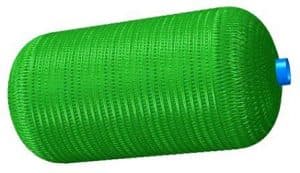Finite Element Analysis of Polymers
Finite element analysis of polymers & modeling the mechanical behavior of polymers involves elastomers and rubbers, thermoplastics, thermosets, foams, and biological materials. The behavior of nonlinear polymer materials is mainly dependent on the loading rate and temperature. BanuMusa R&D has developed various models using Fortran user subroutines in the Abaqus software that are used to predict the mechanical behavior and failure of polymer materials in various structures and equipment.
Our company specializes in product design, manufacturing processes, and damage analysis of all types of polymer parts and equipment. Our services in this area include performing finite element analysis of damage, and fracture & failure analysis. Mostly coding and production of engineering software to predict the mechanical behavior and failure of polymer materials have been among our customer’s orders.
BanuMusa R&D Services
Here are some BanuMusa R&D services regarding finite element analysis of polymers:
- Nonlinear material models: Polymers typically exhibit nonlinear stress-strain behavior due to large deformations, plasticity, creep, and viscoelasticity. Linear elastic models are often insufficient.
- Hyperelastic material models: Rubber-like behavior of polymers under large strains can be modeled using hyperelastic material models. These define a strain energy potential function from which stresses are derived.
- Viscoelastic material models: The time-dependent and rate-dependent response of polymers can be captured using viscoelastic material models. These account for both elastic and dissipative components of the stress-strain behavior.
- Plasticity and creep models: The plastic deformation and time-dependent deformation (creep) of polymers can be modeled using dedicated plasticity and creep material models. These are often combined with hyperelastic or viscoelastic models.
- Damage models: As polymers deform, they accumulate damage which degrades their load-carrying capacity. Damage evolution models can be used to predict the reduction of material properties with increasing load or deformation.
- Fracture mechanics models: The initiation and propagation of cracks in polymers can be simulated by integrating cohesive zone models, crack propagation criteria, and reduced integration elements.
- Calibration of test data: Accurate material models require experimental data from tensile, creep, relaxation and cyclic tests, as well as fracture toughness tests.
- Challenging analyses: Nonlinear analyses of polymers are computationally intensive and require careful modeling choices and convergence checks.
Writing User subroutine 
Also in this company, using user subroutine different codes for different types of materials have been prepared and have industrial and research applications to perform finite element analysis of polymers:
- Foams
- Urethane Polycarbonate (PCU)
- Elastomers
- UHMWPE
- Thermoplastic materials
- Hydrogels
- FRP composites
- Texture
- Hybrid composites (carbon/glass)
- FML
Contact us for more information.














